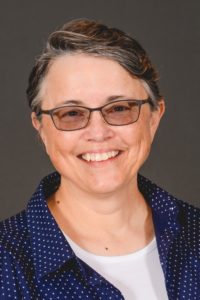
Needling Students to Authenticity
As a professor at a Catholic graduate school of theology and ministry, I need to consider the spiritual, human, intellectual, and pastoral formation of my students as I develop course curriculums. Often opportunities for growth and learning occur when students experience difficulty and dryness; conflict and confrontation; rigidity and dissonance, as well as, tensions and varying degrees of self-awareness. All of this seems to me to be fodder for growth only if a safe space which invites vulnerability without judgement is created within the learning environment.
The invitation to vulnerability is set by the tone of the classroom—a welcoming smile, a nodding of one’s head, penetrating eyes—all actions which communicate respectful presence, deep listening and acceptance; not necessarily agreement. These intimate actions which facilitate trust and safety in a face-to-face classroom can be absent from the asynchronous portions of hybrid or totally online courses.
I imagine that you are familiar with the adage, “The family that prays together stays together.” By extension, I hope you agree then that the family that prays together also learns, grows, and experiences life together in all its ups and downs.
This is my experience in the online learning environment: the community that prays together stays together, learns together, grows together, and experiences life together in all its ups and downs. This is not to say that prayer is dispensable in the face-to-face environment, it is not. And it is not dispensable in the online environment either. Perhaps it is even more essential because the smiling faces, the nodding heads, and penetrating eyes are absent. It is my belief that communal prayer and reflection—even when engaged asynchronously or perhaps in Kairos time—enhance our common learning experience.
Practically, the importance of communal prayer is made clear in the syllabus and introduction video for any online class. Each class begins with prayer. It is built into the study guide and the course module. The learning community is encouraged to participate in the weekly prayer and offer reflections in a ‘prayer blog.’ As the professor, I monitor this blog, rarely, if ever, making a public comment.
The blog is accessible in two ways: via a link within the weekly module which is placed just after the prayer, and via the ‘class blogs’ tab in the table of contents. The weekly prayer takes many forms: from videos with images and voice-overs to links which steer students to a beautiful solo accompanied by a string quartet. Prayers are chosen carefully and support the week’s theme/content. For example, when beginning a course in theological field education, a simple reading of the well-known words of Pierre Teilhard de Chardin, “Trust in the Slow Work of God,” with the single image of the cosmos in video form, opens the learning community toward growth and conversion. When studying the spiritual themes of the gospels, a PowerPoint filled with images that break open the proclamation of the Beatitudes in Matthew’s gospel provides the moment of prayer. When studying Celtic spirituality, a link to a beautiful rendition of “I Arise Today” breaks open the heart.
Participation of the students in this formative activity is generally between 80-90%. Some students honor the original postings with silence while others offer beautiful affirmations and gratitude. It is a sacred space.
St. Teresa de Ávila writes, “Prayer is not just spending time with God. It is partly that—but if it ends there, it is fruitless. No, prayer is dynamic. Authentic prayer changes us—unmasks us, strips us, indicates where growth is needed. Authentic prayer never leads to complacency, but needles us, makes us uneasy at times. It leads us to true self-knowledge, to true humility.”
Prayer in community, as you well know, takes on an organic, dynamic depth which touches the soul. If we participate with the Spirit, through prayer as a community—and in this case, as a learning community in an online environment—the Spirit opens us to create a space filled with palpable welcoming, felt affirmation, and attentive gazes. It invites us to authenticity by ‘needling’ us beyond ourselves and, in its capacity to ‘unmask’ and ‘strip us,’ together we find that we are better able to move through the difficulty and dryness, engage the conflict and confrontation, soften our rigidity and quell dissonance, and, as well, hold the tensions as we deepen into greater self-awareness supporting one another in mutual learning and growth.
Leave a Reply